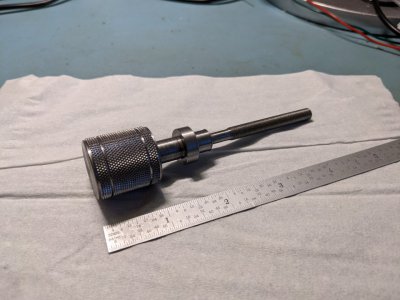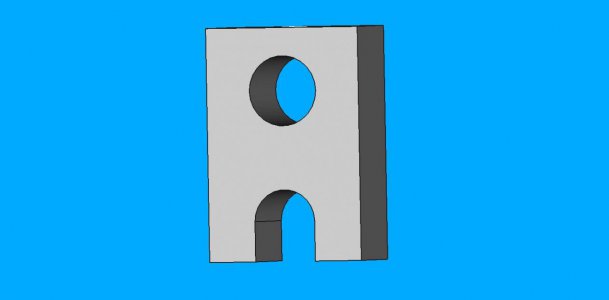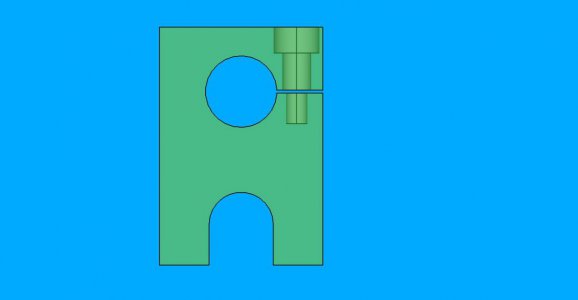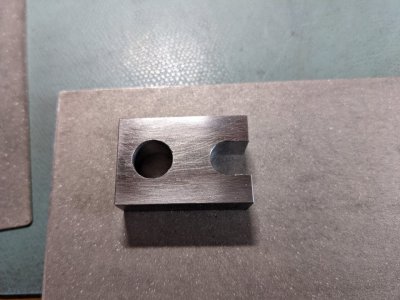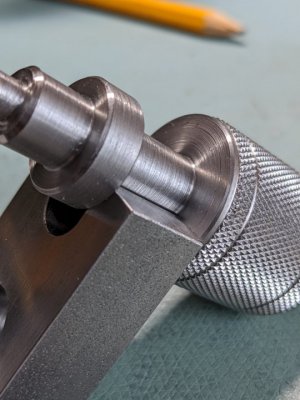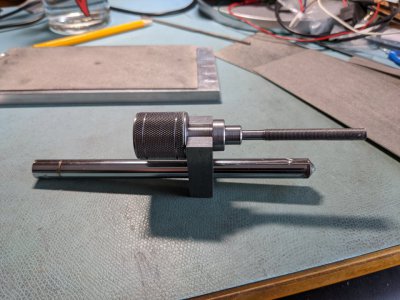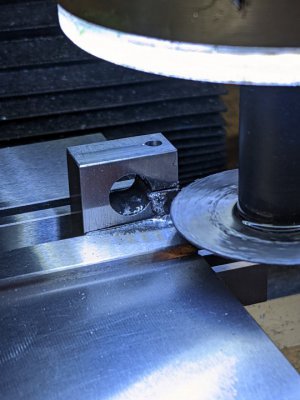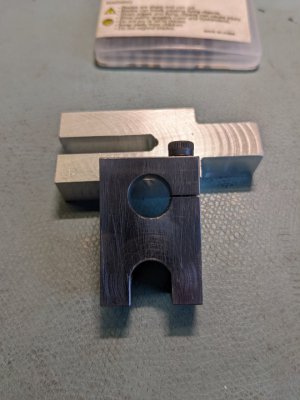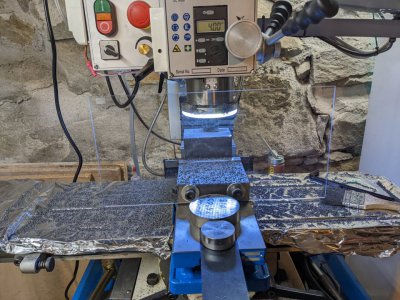- Joined
- Dec 18, 2019
- Messages
- 6,485
Made the screw, but had knurling failure. Managed to rip out some of the knurls. However, the screw itself isn't bad. I'll cut of the bad knurls and re-knurl, with a little less pressure and a faster feed rate. The knob diameter isn't critical. Never had a bad knurl like this. Then again, this is 12L14, and haven't knurled it much. The knob on the knurler was made of 1144 and knurled by the same knurler. It came out great.
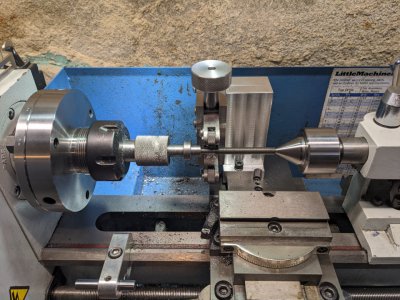
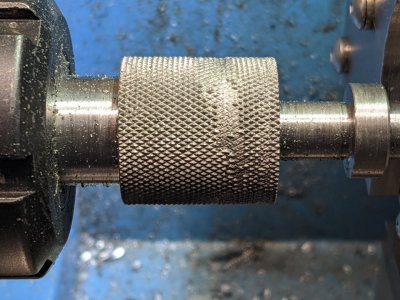
The thread of the screw is 1/4-40, all single pointed. Ran a die over it, but it barely removed anything. Modified the shaft to 10 mm in sections to keep this from getting too spindly. Was kind of fun to make, and a challenge for me. Next photos should have better knurls I hope.


The thread of the screw is 1/4-40, all single pointed. Ran a die over it, but it barely removed anything. Modified the shaft to 10 mm in sections to keep this from getting too spindly. Was kind of fun to make, and a challenge for me. Next photos should have better knurls I hope.


